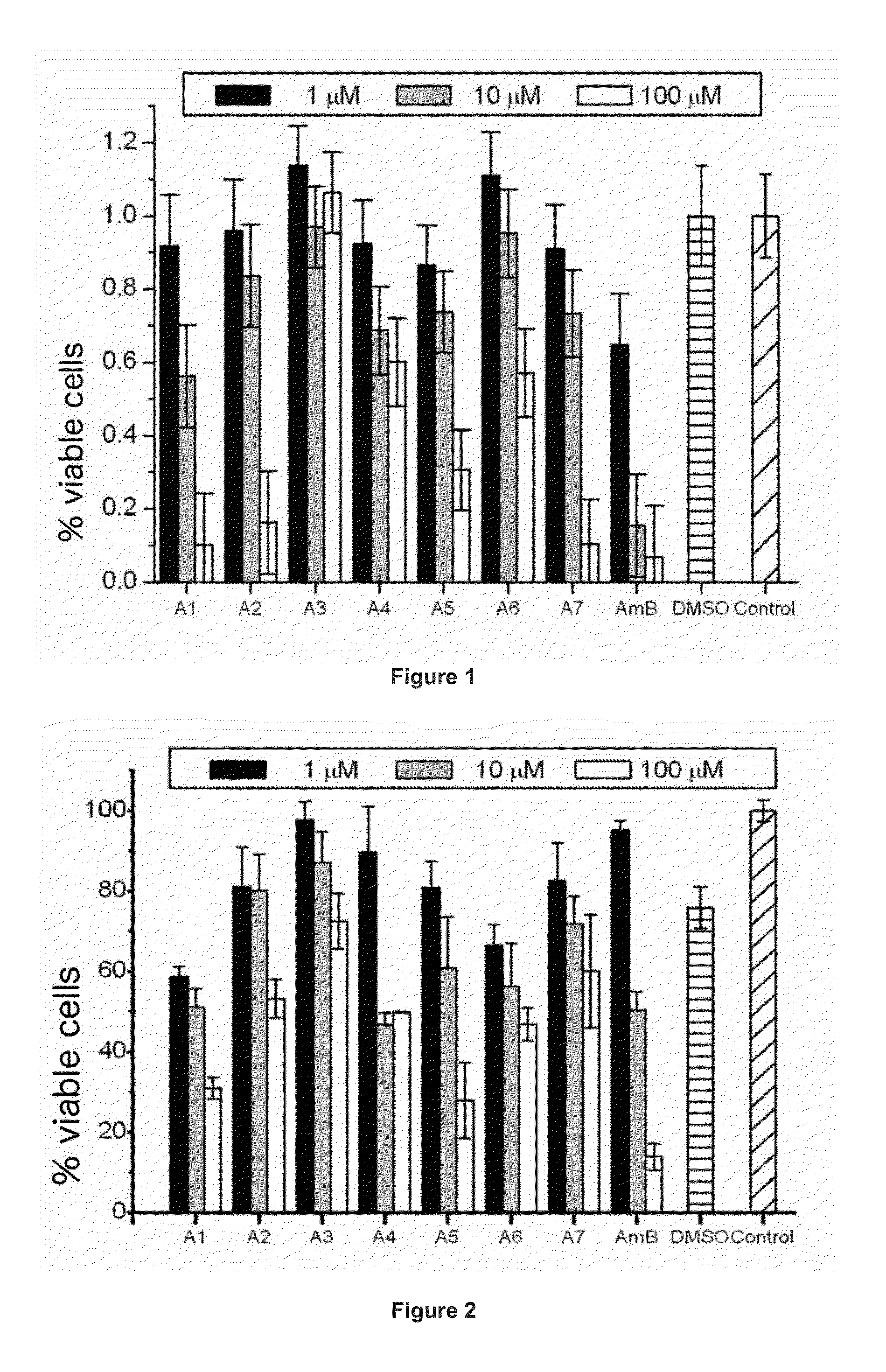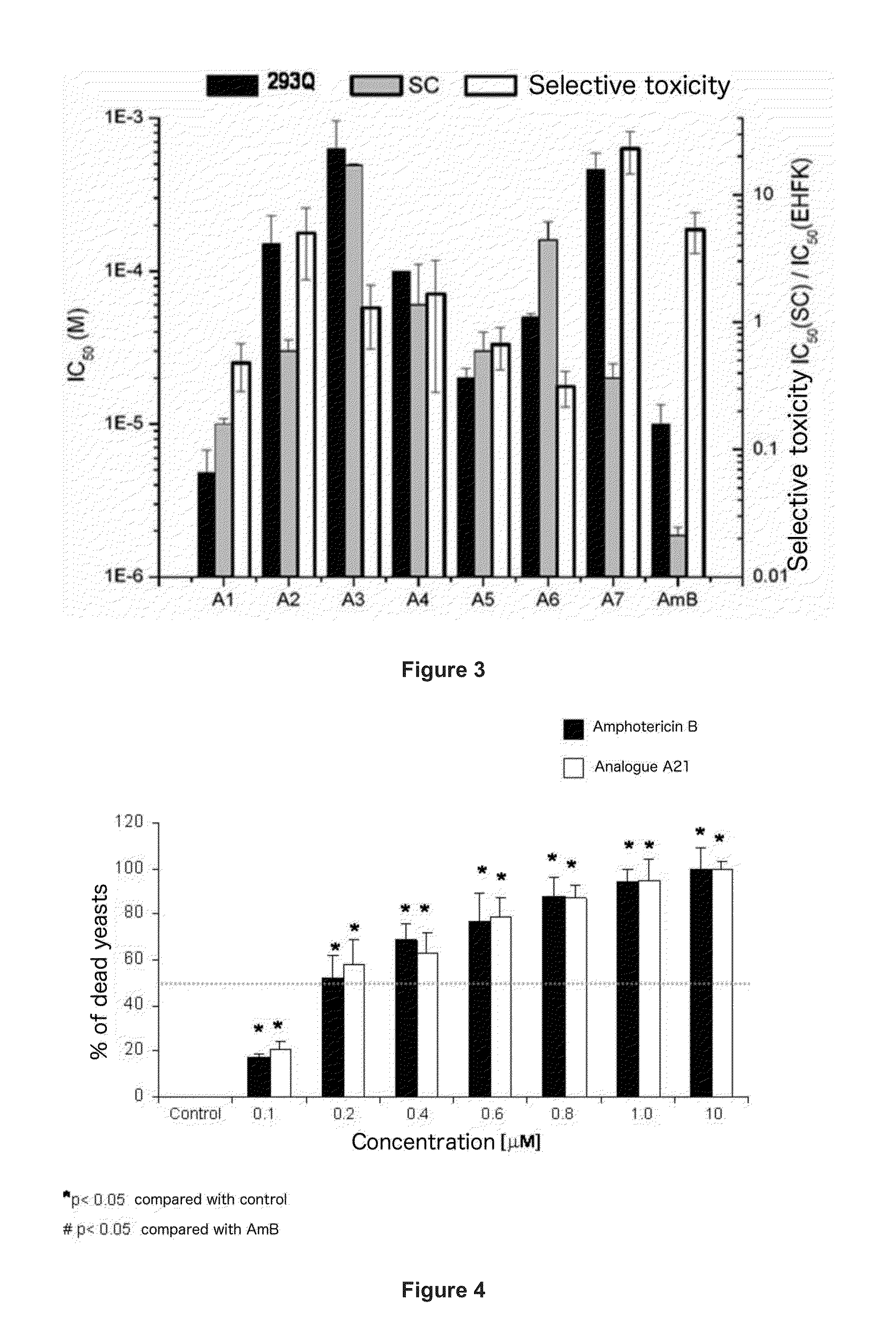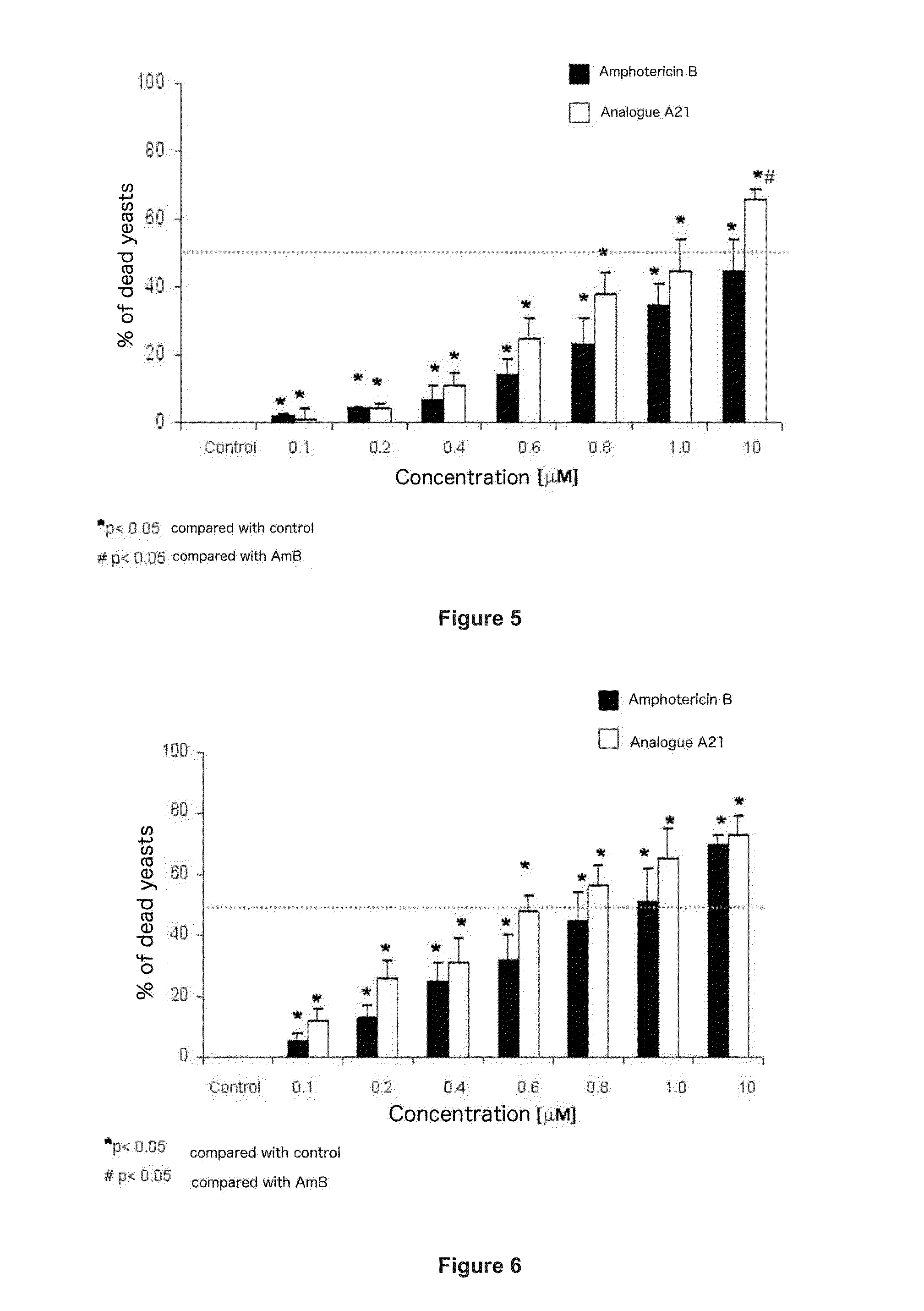Amphotericin Analogous Compounds and Pharmaceutical Compositions Containing Them
a technology of amphotericin and analogous compounds, applied in the field of medicine, can solve the problems of loss of cellular homeostasis and death, the optimal treatment strategy of candidal infections is controversial, and the need for new alternative drugs, so as to improve the antifungal activity, optimize the antifungal activity, and the effect of the same pharmacological properties
- Summary
- Abstract
- Description
- Claims
- Application Information
AI Technical Summary
Benefits of technology
Problems solved by technology
Method used
Image
Examples
example 1
Synthesis of Amide 1: N-benzylamide of AmB
[0100]A preferred embodiment of the present invention provides the analogue of AmB denominated amide 1: N-benzylamide of AmB, represented by formula I; using benzylamine as the starting amine.
[0101]The effects obtained with this derivative are:[0102]Steric effect between the aromatic ring and the amino carbohydrate unit.[0103]Hydrogen bridges between the amide nitrogen and the carbohydrate —OH groups of the neighboring molecule, besides the generation of a hydrogen bridge between the amide hydrogen and the —OH group at the β position to the carbonyl. This interaction is strong because of the possible formation of a 6-membered ring stabilized by the partial character of double bond between the nitrogen and the carbonyl carbon. This bond could be generated in all amides with one hydrogen in the amide group.
[0104]π-π interactions between the aromatic rings of neighboring molecules, and H-π interactions between the hydrogens of the —OH groups in...
example 2
Synthesis of the Amide 2: N-cycloheximide of AmB
[0108]In another preferred embodiment the present invention provides the analogue of AmB denominated amide 2: N-cycloheximide, represented by formula II; using cycloheximide as the starting amine.
[0109]For this synthesis the inventors contemplated only two aspects: the steric effect between the cyclohexyl ring and the carbohydrate; and the decrease in the hydrophilic character of the derivative.
[0110]The first aspect would lead to stabilization in the channel structure, while the second aspect would produce a destabilization.
Characterization of Amide N-Cycloheximide of AmB.
[0111]In analyzing the IR spectrum of this product, it was found that the band corresponding to the OH vibration of the polyhydroxylated chain was much smaller than that of AmB. This led to assume that the product (amide 2a) showed a solvation effect with dimethylacetamide in the OH groups of the polyhydroxy chain. However, it is also contemplated that if this happen...
example 3
Amide 3 Synthesis: N-diisopropylamide of AmB
[0115]In another preferred embodiment the present invention provides the analogue of AmB denominated amide 3, N-diisopropylamide of AmB, represented by formula III, using diisopropylamine as the starting amine:
[0116]For this synthesis the invention contemplates two aspects: a strong steric effect between the two isopropyl groups and the carbohydrate, and the elimination of the hydrophilic head of the derivate. The first aspect would lead to stabilization in the channel structure, while the second aspect would create a destabilization.
Characterization of Amide N-diisopropylamide of AmB.
[0117]It was found in the IR spectrum of the derivative that the characteristic band of the polyhydroxylated chain was almost the same as that of AmB. The inventors observed the disappearance of the acid carbonyl band at 1711.0 cm−1 and the appearance of the amide carbonyl at 1642.8 cm−1. The derivative had a value of Rf=0.7, and it is therefore considered qu...
PUM
| Property | Measurement | Unit |
|---|---|---|
| diameter | aaaaa | aaaaa |
| temperature | aaaaa | aaaaa |
| temperature | aaaaa | aaaaa |
Abstract
Description
Claims
Application Information
 Login to View More
Login to View More - R&D
- Intellectual Property
- Life Sciences
- Materials
- Tech Scout
- Unparalleled Data Quality
- Higher Quality Content
- 60% Fewer Hallucinations
Browse by: Latest US Patents, China's latest patents, Technical Efficacy Thesaurus, Application Domain, Technology Topic, Popular Technical Reports.
© 2025 PatSnap. All rights reserved.Legal|Privacy policy|Modern Slavery Act Transparency Statement|Sitemap|About US| Contact US: help@patsnap.com



